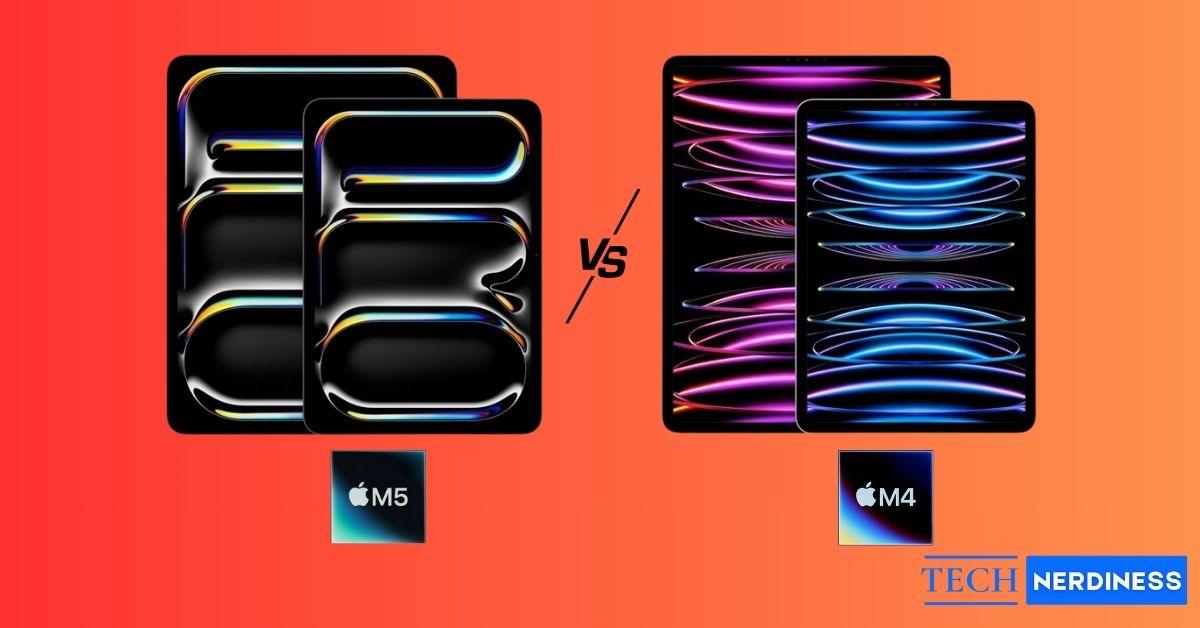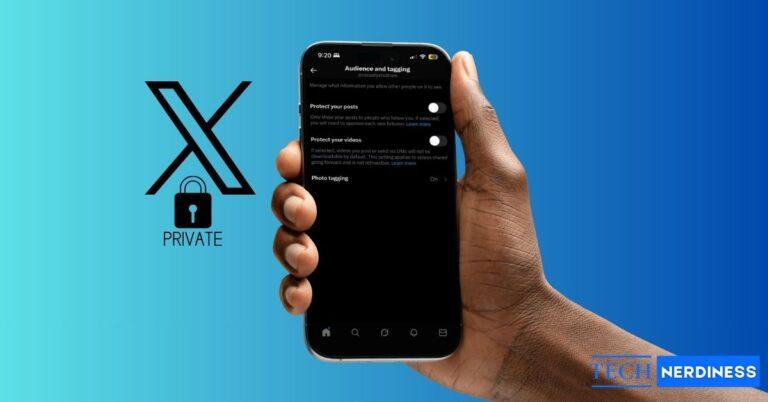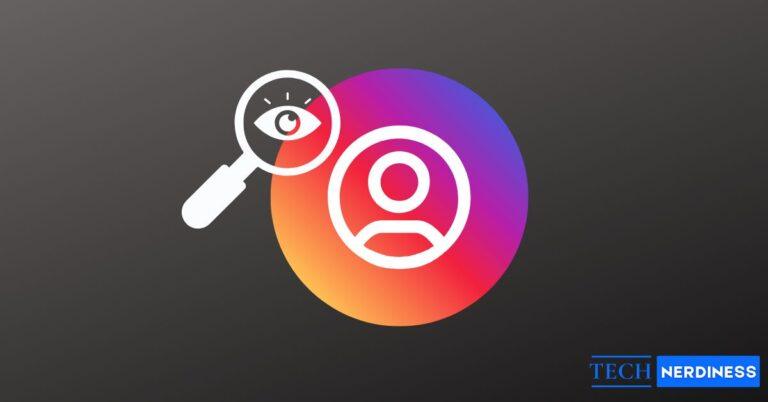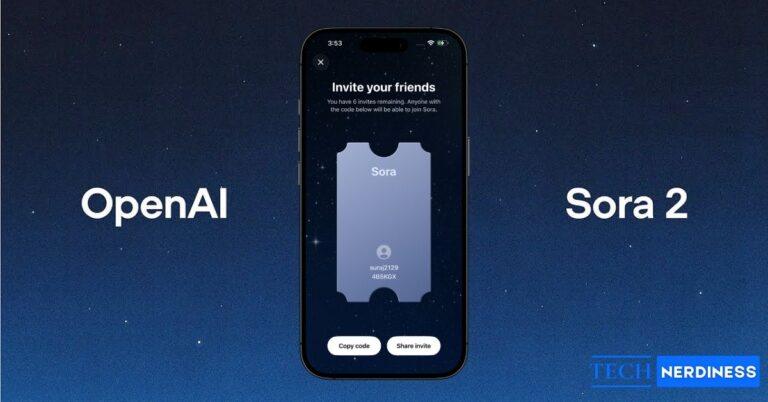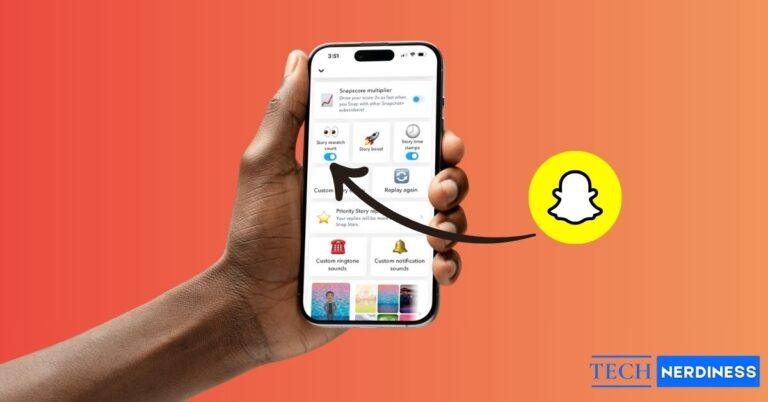Apple’s iPad Pro lineup just got an upgrade again! The new M5 iPad Pro is here, replacing the already-powerful M4 iPad Pro from 2024. At first glance, both look almost identical, boasting the same sleek design, gorgeous OLED display, and price tag. So, what’s actually new?
It turns out the real changes are under the hood. Apple has tweaked the new iPad Pro for increased performance, AI smarts, and improved connectivity. Is that reason enough to make the upgrade, or should you hold onto your M4 and save your money?
Let’s compare the M5 iPad Pro vs. the M4 Pro and understand everything that’s new and what’s not.
Table of Contents
- M5 iPad Pro vs. M4 iPad Pro: Quick Specs Comparison
- The New M5 Chip: More Than Just a Spec Bump
- Memory and Storage: A Boost Where It Matters
- Fast Charging: Finally Catching Up
- Connectivity Upgrades: Modem, Wi-Fi, Wireless Chip
- C1X 5G Modem
- N1 Wireless Chip (Wi-Fi, Bluetooth, Thread)
- Better External Display Support
- What Stays the Same in the M5 iPad Pro?
- Verdict: Upgrade, Buy New, or Stick With M4?
M5 iPad Pro vs. M4 iPad Pro: Quick Specs Comparison
| Feature | M4 iPad Pro (2024) | M5 iPad Pro (2025) |
|---|---|---|
| Chip / CPU / GPU | M4 chip, up to 10-core CPU, 10-core GPU | M5 chip, up to 10-core CPU, GPU with Neural Accelerators |
| RAM | 8 GB (256/512 GB) or 16 GB (1 TB/2 TB) | 12 GB (256/512 GB) or 16 GB (1 TB/2 TB) |
| Memory Bandwidth | ~120 GB/s | >150 GB/s |
| Storage Speed | Standard SSD | Up to 2× faster SSD |
| Display | OLED Ultra Retina XDR | OLED Ultra Retina XDR |
| Cameras | Front 12 MP (Center Stage), rear 12 MP wide | Same |
| Connectivity | Wi-Fi 6E, Bluetooth 5.3, 5G (sub-6) | Wi-Fi 7 (N1 chip), Bluetooth 6, Thread, C1X 5G modem |
| External Display Support | 60Hz max | 120Hz with Adaptive Sync |
| Fast Charging | Standard USB-C charging | Fast charge support (50% in ~35 minutes with compatible adapter) |
| Design & Dimensions | 11-inch / 13-inch, ultra-thin, same bezels | Same |
| Price (US) | $999 / $1,299 | Same |
The New M5 Chip: More Than Just a Spec Bump
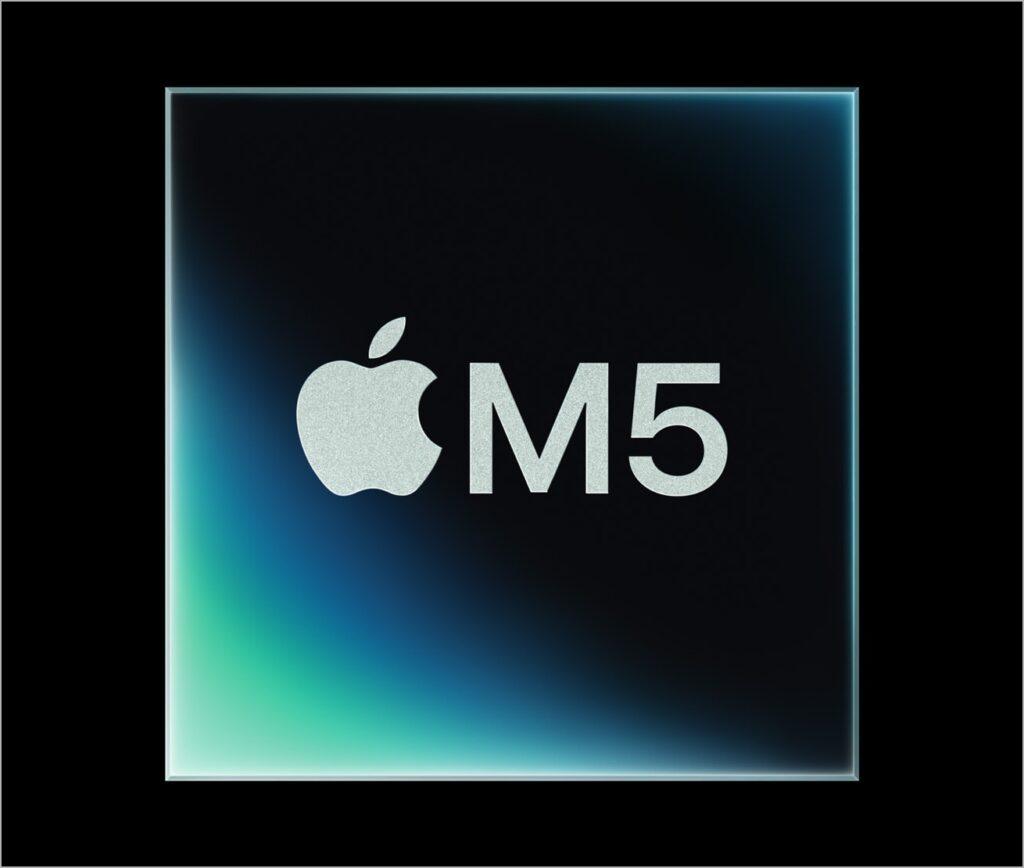
This is the heart of the upgrade. The M5 is the big new thing in the latest iPad Pro.
- Apple says the biggest gains with M5 are in the GPU + Neural Accelerators. This means it can handle AI loads more efficiently.
- Apple claims that GPU-based AI workloads can hit up to 4× what M4 can do.
- The CPU side is also faster, featuring 6 efficiency cores and 4 performance cores. Leaked benchmarks hint at about 15% gains in multithread performance.
So, if you use AI features (image generation, writing tools, etc.) or do heavy-duty graphics, you’ll notice greater benefits. For typical activities like email, notes, and web surfing, you’ll notice a slight improvement, but not a significant difference.
Memory and Storage: A Boost Where It Matters
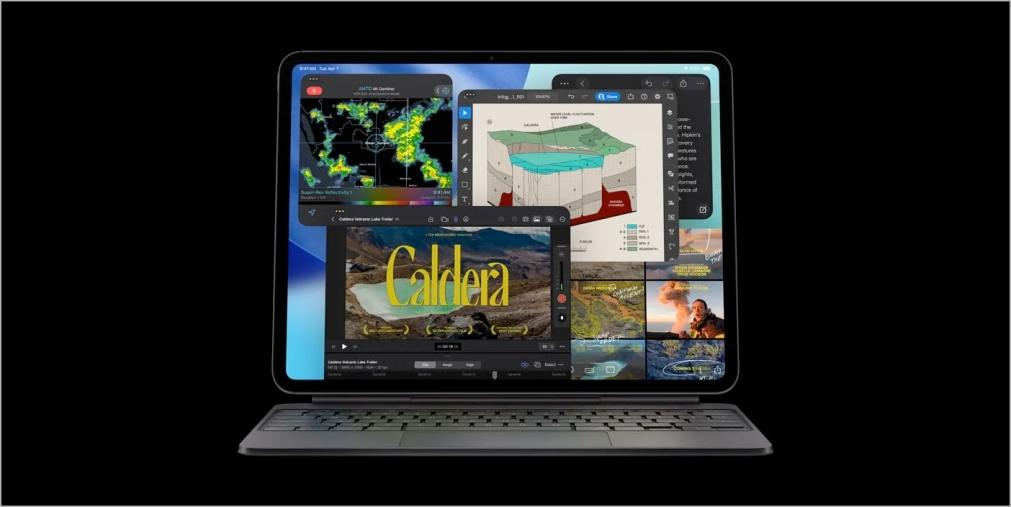
One of the areas where M5 significantly outperforms M4 is in memory and storage speed.
- In the M5 iPad Pro, the 256 GB and 512 GB variants now get 12 GB of RAM, up from 8 GB in the M4 in those same tiers.
- Memory bandwidth is improved, too. M5 boasts 153 GB/s of unified memory bandwidth, which is about a 30% increase over M4.
- Storage read/write speeds are also up to 2× faster than M4.
Apple highlights that this helps multitasking and complex workflows in iPadOS 26.
Fast Charging: Finally Catching Up
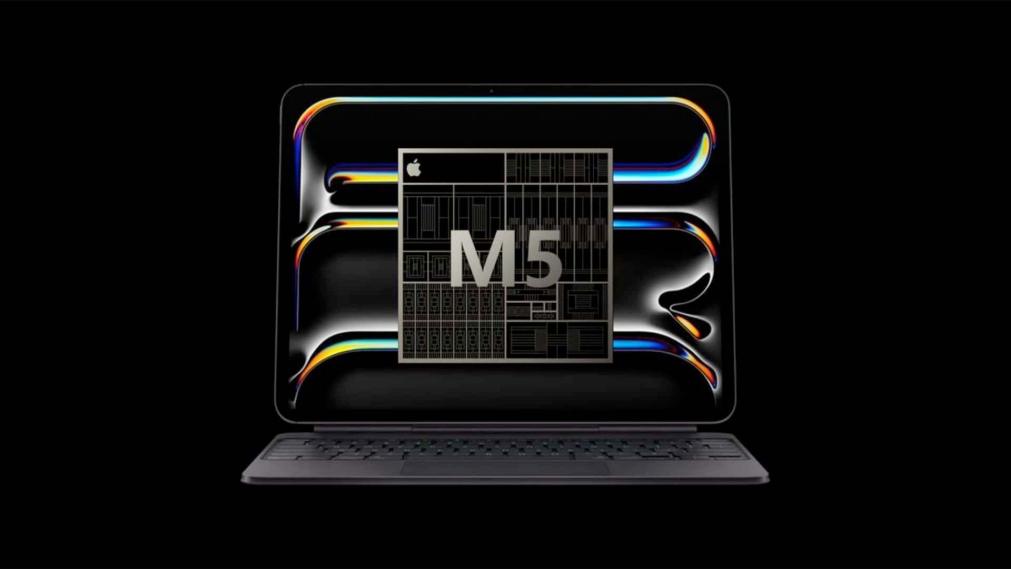
Here comes fast charging on the M5 iPad Pro, which was missing on the M4 model.
With a compatible adapter (e.g., the 40W Dynamic Power Adapter or other 60W+ USB-C chargers), you can charge up to 50% in 35 minutes.
So if you often run low on battery and want to top up quickly, M5 gives you that flexibility.
Connectivity Upgrades: Modem, Wi-Fi, Wireless Chip
Connectivity is another major area of improvement. The M5 iPad Pro brings in newer chips.
C1X 5G Modem
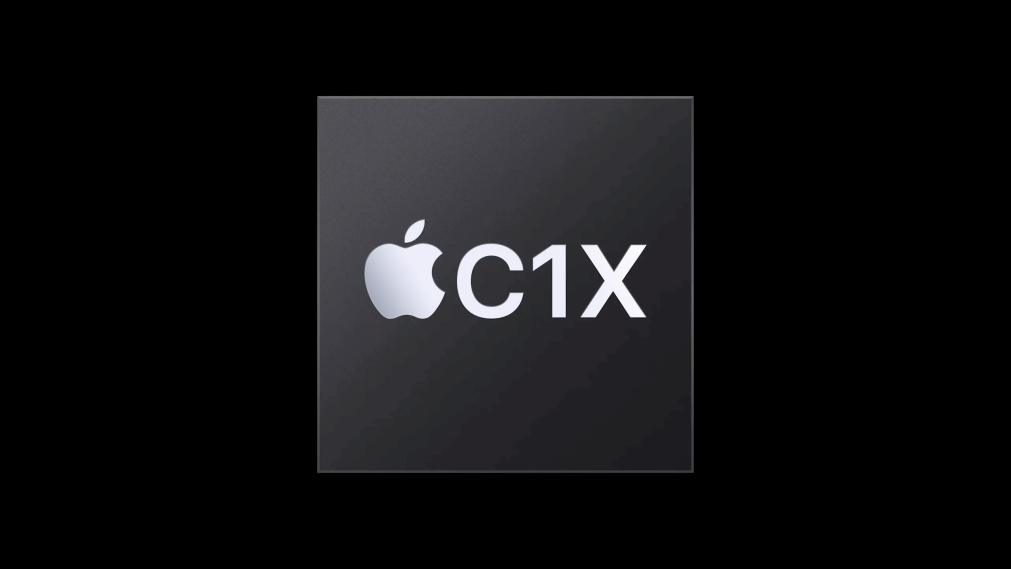
- M5 gets Apple’s newer C1X modem on the iPad Pro.
- Apple claims up to 50% faster cellular data performance compared to the older iPad modem.
- Also, for heavy cellular users, Apple says the new modem is more efficient and can consume up to 30% less power in active use vs. the M4’s modem.
This is interesting: official battery specs are unchanged, but in real-world heavy cellular use, M5 might last better.
N1 Wireless Chip (Wi-Fi, Bluetooth, Thread)
- The M5 iPad Pro includes the N1 chip to support Wi-Fi 7, while the M4 was limited to Wi-Fi 6E.
- N1 also includes Bluetooth 6 (up from 5.3) and support for Thread (smart home protocol) in the new iPad.
- Apple claims N1 improves 5GHz network performance and reliability of features like AirDrop, Personal Hotspot, and other related services.
So if you have a modern Wi-Fi 7 router or rely on fast local transfers, M5 gives you a future-ready network edge.
Better External Display Support
One feature that stands out in the M5 iPad Pro compared to the M4 is external display support at 120Hz.
- The M5 iPad Pro can drive external displays at up to 120Hz, meaning the refresh rate remains smooth and fluid when hooked to a monitor.
- It also supports Adaptive Sync for external displays, reducing latency and making graphics, gaming, and video editing more seamless.
This is especially useful for creative workflows (video editing, motion graphics) or gaming when you use a bigger screen.
What Stays the Same in the M5 iPad Pro?
Not everything changes. Here are the features that carried forward:
- Sizes and dimensions: same two sizes (11-inch, 13-inch), same thickness, same overall shape.
- Display: same Ultra Retina XDR panel. Apple didn’t change the OLED/display hardware.
- Cameras: no change. Despite rumors, both M4 and M5 iPad Pros use the same camera setups in the front and back.
- Pricing: the starting MSRP hasn’t changed. $999 for the 11-inch, $1,299 for 13-inch.
- Accessories: Apple Pencil, Magic Keyboard, etc., remain compatible and unchanged.
So visually and functionally in many everyday ways, the M5 doesn’t feel dramatically different from the M4.
Verdict: Upgrade, Buy New, or Stick With M4?
Putting it all together:
- If you’re buying new in 2025, the M5 is the safer choice. It provides more power for AI/graphics workloads, enhanced connectivity, fast charging, and improved external monitor support.
- If you already have an M4, upgrading to M5 is tempting but not mandatory unless your use involves heavy workloads. For light to moderate users, M4 will remain more than sufficient.
- For people on a budget, the M4 remains a very capable device. Unless the price gap is small, the added cost of M5 must be weighed against how much you need its extra performance and features.
So, which iPad Pro are you going for? Let me know in the comments below!

